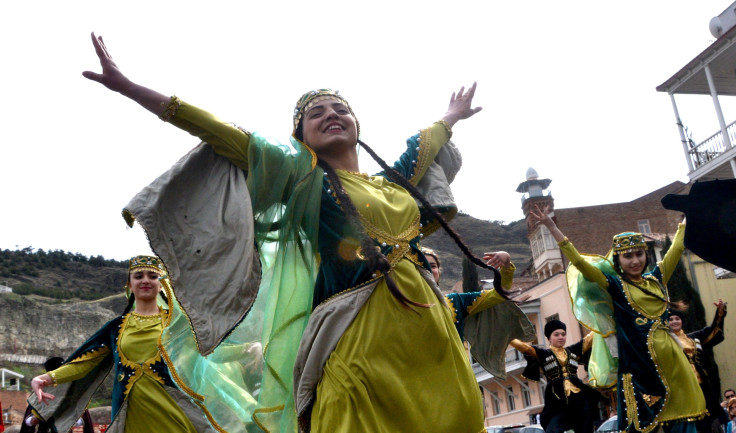What Is Nowruz? Persian New Year's History, Facts And How To Celebrate

Nowruz, which means “New Day” is celebrated on March 20 by Persians still following the Zoroastrian religion. It is also known as Persian New Year.
President Donald Trump acknowledged the Persian New Year on Monday, although he mostly used it to attack the government and military of Iran in his speech.
“The history of Nowruz is rooted in Iran, where for millennia a proud nation has overcome great challenges by the strength of its culture and the resilience of its people,” Trump said in a statement, Bloomberg reported. “Today, the Iranian people face another challenge: rulers who serve themselves instead of serving the people.”
Regardless of Iran’s deteriorating reputation internationally, millions of Iranians as well as non-Iranians across the globe will be celebrating the holiday by undertaking spring cleaning in their homes on a massive scale and greeting their loved ones with best wishes for a fruitful year ahead.
The beginning of the Persian New Year coincides with the vernal equinox, which means that this year Nowruz would not start at the stroke of midnight, but rather on March 20 afternoon, which is when the phenomenon is scheduled.
The Persian New Year has its origins in Zoroastrianism, an ancient Persian religion that goes back to 3,000 years and predates both Christianity and Islam.
People in Iran are so protective of Nowruz that even when a new government presiding over the nation after the 1979 revolution tried to suppress the hype and anticipation surrounding the festival, citing prehistoric origins as the basis for doing so, the citizens rose up in protest against their authorities’ decision.
Nowruz celebrations last 12 days in countries like Iran, Afghanistan, Iraq and Uzbekistan, among others. In places such as Iraq and Turkey, it is celebrated mostly by the Kurdish population.
One of the vital preparations for the Persian New Year is “knoneh takooni,” which is Farsi term for annual spring cleaning. The cleaning ritual includes clearing out their closets and washing piles of clothes, along with curtains, rugs and windows. In the procedure, material things that are no longer needed in the household are donated to the needy. Anything broken in the house is repaired.
One of the tradition followed in the days leading up to the festival is displaying seven items beginning with the letter “S” on a table, all of which are meant to represent good health and fortune in the coming year. These items form the “haft-seen.”
According to Vox, while “haft-seens” have now evolved to include other things as well, original seven “S” items were:
Sabzeh: A type of sprout or grass that will continue to grow in the weeks leading up to the holiday. It signifies rebirth and renewal.
Senjed: Ideally a sweet fruit from a lotus tree, it can also be a dried fruit. It signifies love.
Sib: Apples. It signifies beauty and health.
Seer: Garlic, for its medicinal qualities. It reminds one to take care of oneself.
Samanu: A sweet pudding. It signifies wealth and fertility.
Serkeh: Vinegar. It represents patience and wisdom.
Sumac: A Persian spice made from crushed sour red berries, which resembles the sunrise and hence a new day.
People also light bonfires on the streets and light firecrackers, dancing around fires with linked arms to celebrate the occasion. People would also visit their dear ones, hold feasts and exchange gifts.
© Copyright IBTimes 2024. All rights reserved.












